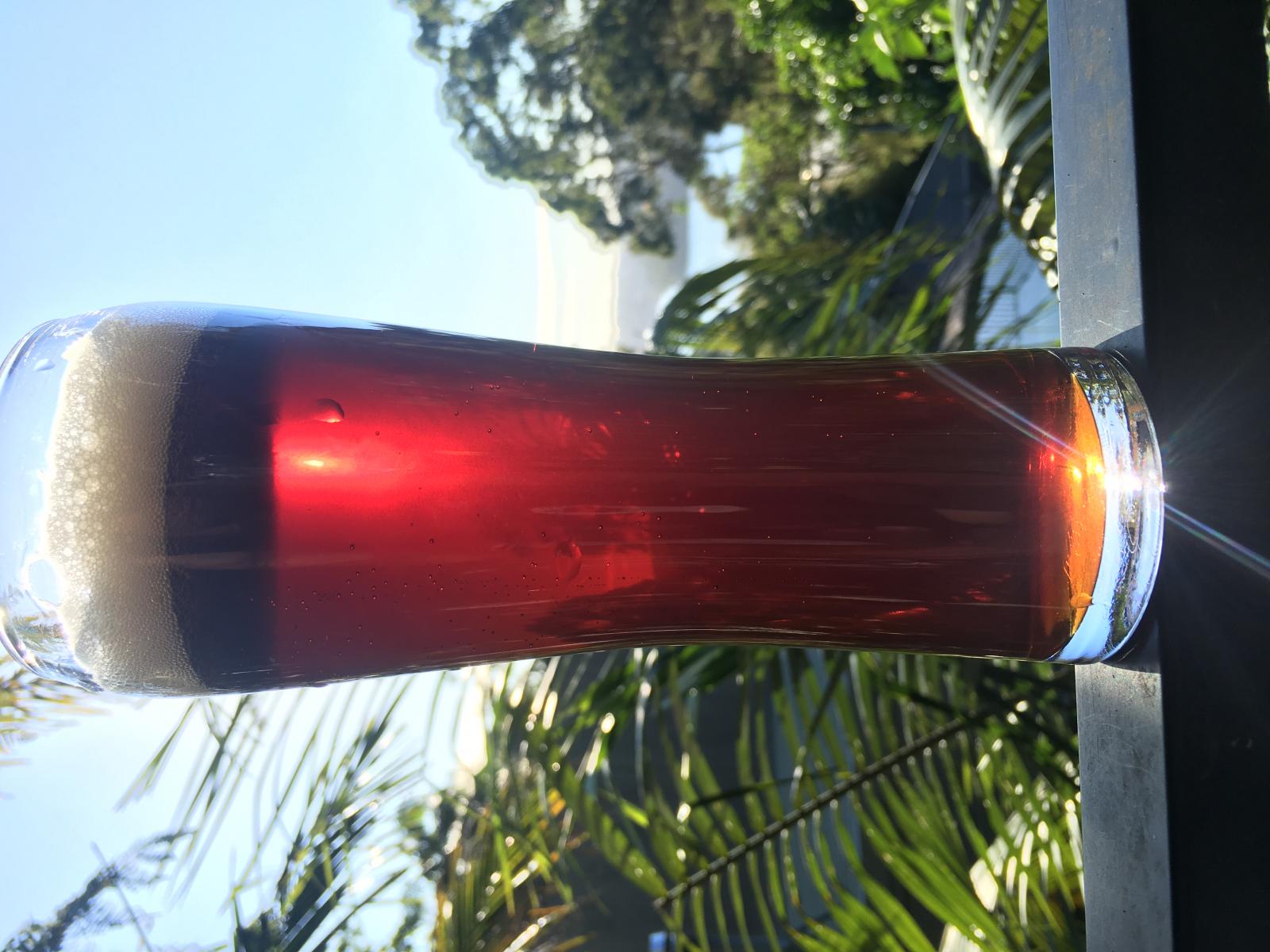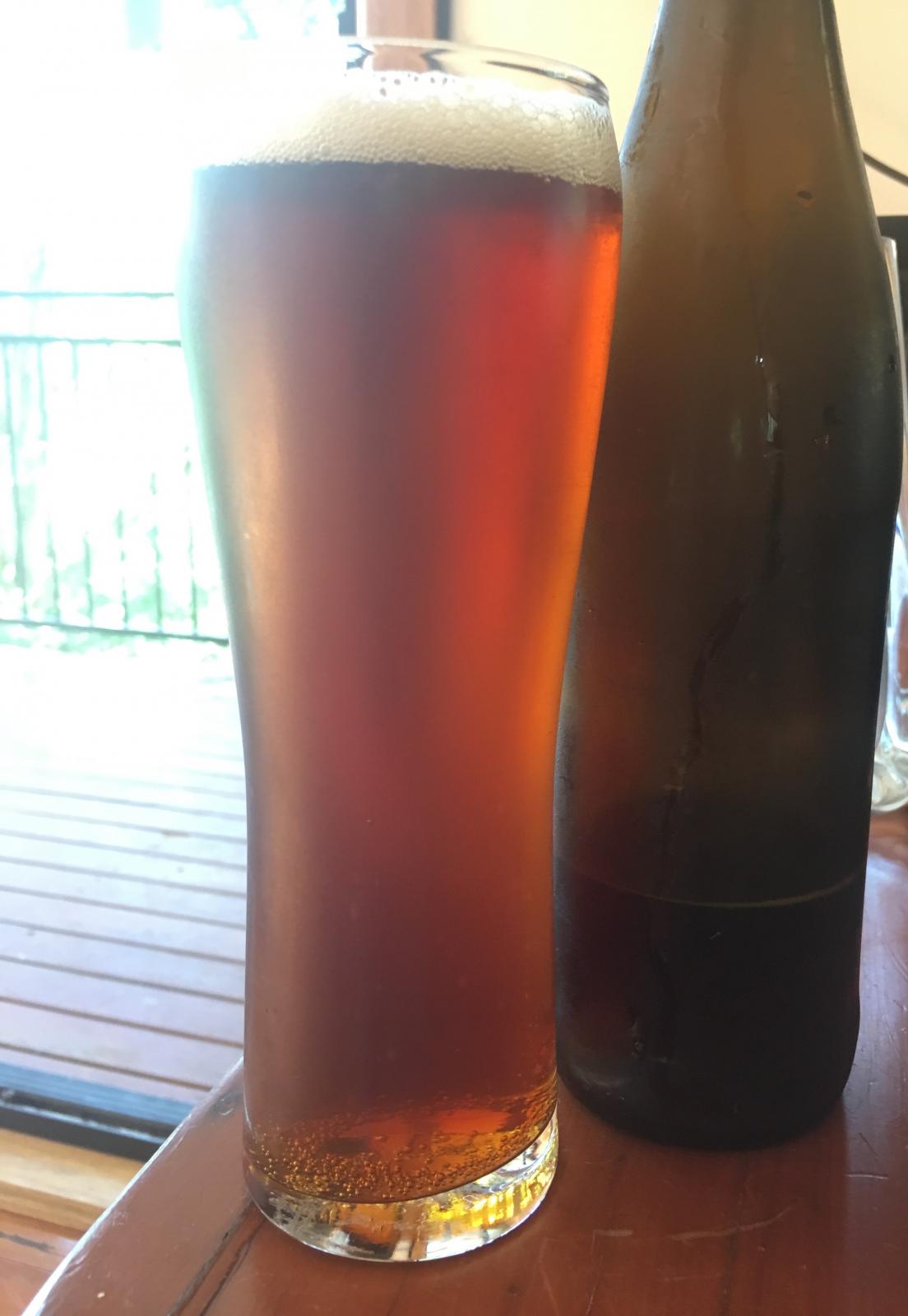Hey Guys,
Being the relative noob I am I need some help. Have recently completed three different beers, back to back BIAB. The first was a hopped dark ale that came out fantastic, had a heap of specialty malt and what not but the taste is spot on...so I won't harp on more about this one. The second was an Amber Ale, which came out good however it has a flavor in it I can't put my finger on. It is not necessarily a bad taste but something that I didn't expect nor do I overly enjoy. It is almost a dry caramel, not overly sweet and a little roasty. Not to sound long whinded, which I will anyway as I want to give you guys all the info I have put the recipe below:
Title: Amber Ale
Brew Method: BIAB
Style Name: American Amber Ale
Boil Time: 60 min
Batch Size: 12 liters (fermentor volume)
Boil Size: 15 liters
Boil Gravity: 1.041
Efficiency: 75% (brew house)
STATS:
Original Gravity: 1.051
Final Gravity: 1.009
ABV (standard): 5.5%
IBU (tinseth): 39.14
SRM (morey): 18.1
FERMENTABLES:
2.013 kg - American - Pale 2-Row (74.2%)
0.1 kg - German - Carafa I (3.7%)
0.1 kg - United Kingdom - Dark Crystal 80L (3.7%)
0.25 kg - United Kingdom - Amber (9.2%)
0.1 kg - United Kingdom - Cara Malt (3.7%)
0.15 kg - United Kingdom - Maris Otter Pale (5.5%)
HOPS:
9 g - Chinook, Type: Pellet, AA: 13, Use: Boil for 60 min, IBU: 26.83
6 g - Mosaic, Type: Pellet, AA: 12.5, Use: Boil for 15 min, IBU: 8.54
5 g - amarillo, Type: Pellet, AA: 8.6, Use: Boil for 6 min, IBU: 2.31
6 g - mosaic, Type: Pellet, AA: 12.5, Use: Boil for 2 min, IBU: 1.45
15 g - Amarillo, Type: Pellet, AA: 8.6, Use: Dry Hop for 5 days
10 g - Cascade, Type: Pellet, AA: 7, Use: Dry Hop for 5 days
5 g - Galaxy, Type: Pellet, AA: 14.25, Use: Dry Hop for 5 days
MASH GUIDELINES:
1) Temp: 67 C, Time: 60 min
YEAST:
Fermentis / Safale - American Ale Yeast US-05
Starter: No
Form: Dry
*Didn't make it to FG, stalled at 1.012 not 1.009.
First thought was that I did add a considerable amount of Amber Malt, which I initially assumed was the cause, with its roasty caramel flavor. However today I opened up my third batch which was a session IPA. I used Pale Malt and only German Carafa 1 a tiny amount 2%, but used more than double the amount of CaraMalt: 10%. After a week in primary and FG nearly spot on it has the same smell the Amber had with regards to this flavor!! In the primary it comes across as a very candied toffee sweet pungent smell.
The Amber fermented at 18C for 10 days before I bottled... Which may have not been enough time for the yeast to get rid of the diacetyl??
Or is this purely a Caramalt/Crystal malt attribute??
Any tips on discerning Diacetyl for a newbie!?
Cheers!
Being the relative noob I am I need some help. Have recently completed three different beers, back to back BIAB. The first was a hopped dark ale that came out fantastic, had a heap of specialty malt and what not but the taste is spot on...so I won't harp on more about this one. The second was an Amber Ale, which came out good however it has a flavor in it I can't put my finger on. It is not necessarily a bad taste but something that I didn't expect nor do I overly enjoy. It is almost a dry caramel, not overly sweet and a little roasty. Not to sound long whinded, which I will anyway as I want to give you guys all the info I have put the recipe below:
Title: Amber Ale
Brew Method: BIAB
Style Name: American Amber Ale
Boil Time: 60 min
Batch Size: 12 liters (fermentor volume)
Boil Size: 15 liters
Boil Gravity: 1.041
Efficiency: 75% (brew house)
STATS:
Original Gravity: 1.051
Final Gravity: 1.009
ABV (standard): 5.5%
IBU (tinseth): 39.14
SRM (morey): 18.1
FERMENTABLES:
2.013 kg - American - Pale 2-Row (74.2%)
0.1 kg - German - Carafa I (3.7%)
0.1 kg - United Kingdom - Dark Crystal 80L (3.7%)
0.25 kg - United Kingdom - Amber (9.2%)
0.1 kg - United Kingdom - Cara Malt (3.7%)
0.15 kg - United Kingdom - Maris Otter Pale (5.5%)
HOPS:
9 g - Chinook, Type: Pellet, AA: 13, Use: Boil for 60 min, IBU: 26.83
6 g - Mosaic, Type: Pellet, AA: 12.5, Use: Boil for 15 min, IBU: 8.54
5 g - amarillo, Type: Pellet, AA: 8.6, Use: Boil for 6 min, IBU: 2.31
6 g - mosaic, Type: Pellet, AA: 12.5, Use: Boil for 2 min, IBU: 1.45
15 g - Amarillo, Type: Pellet, AA: 8.6, Use: Dry Hop for 5 days
10 g - Cascade, Type: Pellet, AA: 7, Use: Dry Hop for 5 days
5 g - Galaxy, Type: Pellet, AA: 14.25, Use: Dry Hop for 5 days
MASH GUIDELINES:
1) Temp: 67 C, Time: 60 min
YEAST:
Fermentis / Safale - American Ale Yeast US-05
Starter: No
Form: Dry
*Didn't make it to FG, stalled at 1.012 not 1.009.
First thought was that I did add a considerable amount of Amber Malt, which I initially assumed was the cause, with its roasty caramel flavor. However today I opened up my third batch which was a session IPA. I used Pale Malt and only German Carafa 1 a tiny amount 2%, but used more than double the amount of CaraMalt: 10%. After a week in primary and FG nearly spot on it has the same smell the Amber had with regards to this flavor!! In the primary it comes across as a very candied toffee sweet pungent smell.
The Amber fermented at 18C for 10 days before I bottled... Which may have not been enough time for the yeast to get rid of the diacetyl??
Or is this purely a Caramalt/Crystal malt attribute??
Any tips on discerning Diacetyl for a newbie!?
Cheers!







![Craft A Brew - Safale S-04 Dry Yeast - Fermentis - English Ale Dry Yeast - For English and American Ales and Hard Apple Ciders - Ingredients for Home Brewing - Beer Making Supplies - [1 Pack]](https://m.media-amazon.com/images/I/41fVGNh6JfL._SL500_.jpg)





















































